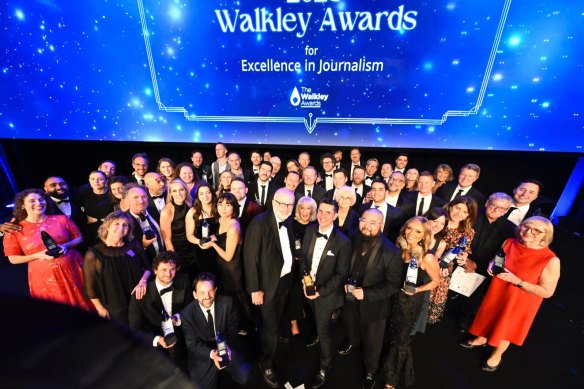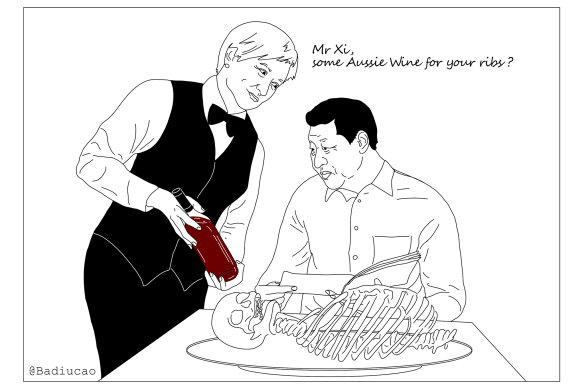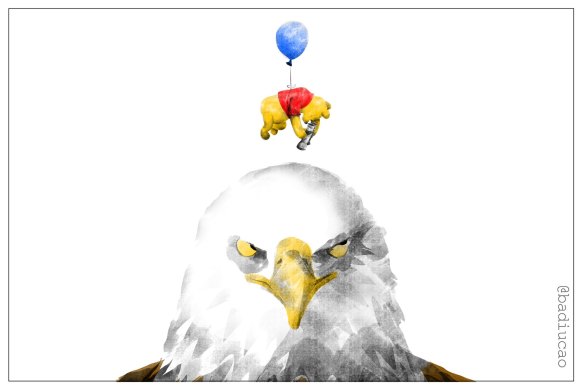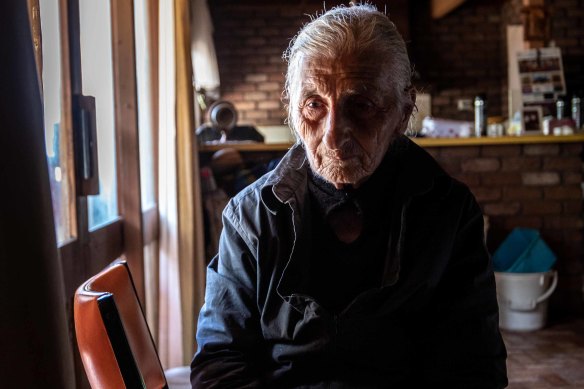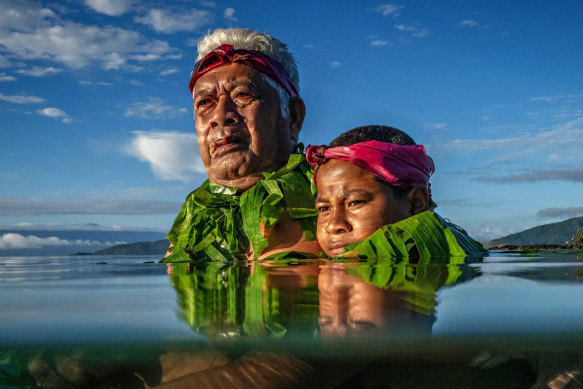
Save articles for later
Add articles to your saved list and come back to them any time.
I want to start with an assurance to you that I am self-aware enough to realise that these notes can come across as gushing at times.
My enthusiasm for the work of our talented journalists, editors, photographers, producers, lawyers and designers sometimes infects this correspondence more than I intend. I sense it happening as I write, yet despite my efforts, I can do little to stop it. This week, I will make no such attempt. Given what happened last night, it would be a waste of energy.
Nine, the owner of The Age and The Sydney Morning Herald, picked up 14 Walkley Awards in 2023. Pictured are all Walkley winners.Credit: The Walkley Foundation
You see, last night, in a cavernous auditorium at the convention centre in Sydney, The Age was recognised by its industry peers as one of the finest newsrooms in the country – a claim I make most weeks and now have more evidence to support.
I am, of course, referring to The Age’s outstanding results at the Walkley Awards, where the best journalism in Australia across all platforms is recognised. It was a special night for The Age, its staff, and our colleagues from The Sydney Morning Herald and 60 Minutes, with whom we collaborate closely. You too should celebrate the accolades, as much of this important work would not have been possible without your support of our journalism.
One particular moment of pride was when investigative reporters Chris Masters and Nick McKenzie were recognised with a special award for media freedom in recognition of their work exposing the war crimes of Ben Roberts-Smith. The Walkley Foundation also announced the establishment of the Masters-McKenzie Grant for Investigative Journalism, in an entirely commendable move that will allow others to pursue what are often prohibitively expensive projects with enormous public interest value. McKenzie was also recognised for his work with 60 Minutes on the “Trafficked” series, which revealed the exploitation of Australia’s visa system and sparked a body of work across The Age, The Sydney Morning Herald and 60 Minutes that exposed systemic problems with our migration rules and the department responsible for enforcing them.
As I’ve said in previous missives, the promise of awards is not what motivates our journalists. No award is worth the sustained personal, legal and professional distress that Masters and McKenzie had to endure following their reporting on the war crimes of Ben Roberts-Smith. They are motivated by their sense of duty to readers, to the truth and their belief in the positive role that good journalism plays in a healthy society.
Our star footy writer and broadcaster Caroline Wilson was also recognised last night for her “outstanding contribution to journalism”. When written next to her name, that line appears to me to be something of an understatement. Wilson’s contribution to sports journalism over decades is immense, pioneering and unmatched. Both our readers and our journalists regularly tell me how grateful they are to have access to her talent and expertise. There was no more deserving recipient of this award.
Wilson stood alongside The Sydney Morning Herald’s Kate McClymont, whose investigative reporting has been a huge inspiration to me and others over many years, and six other extraordinary women who last night received this due recognition – Pamela Williams, Joanne McCarthy, Karla Grant, Marian Wilkinson, Colleen Ryan and Geraldine Doogue.
If the aforementioned winners had been the only awards granted to our newsroom, I would have deemed the evening a success. However, there was plenty more to celebrate.
The first award of the night, for best print/text news report, went to Paul Sakkal for his scoop that the then-premier, Daniel Andrews, was being investigated as part of an anti-corruption probe called Operation Daintree. The fact these stories were written at all, despite immense legal pressure, was an achievement in itself.
Soon after, our colleagues from The Sydney Morning Herald and iKandy Films were recognised for the nation’s best coverage of Indigenous affairs for their “Paradise Poisoned” series. If you didn’t catch this series at the time, I highly recommend you follow this link and take a look at this first-class piece of public interest journalism.
Next up for The Age was Badiucao, whose political cartoons – particularly, but not exclusively on foreign affairs – have enormously enriched our artistic offering in recent years. Rather than attempt to describe the impact of his work, I will let his pictures do that more effectively than my words can.
One of Badiucao’s Walkley-winning cartoons.Credit: Illustration: Badiucao
Badiucao often uses Winnie the Pooh in his cartoons. China censored the character after bloggers compared it to President Xi Jinping.
A collaboration between the visual stories team of The Age and the Herald and sports journalist Vince Rugari received a Walkley for innovation journalism. That story – How to lay a perfect offside trap – and how to break it – was not only clever, but informative, engaging and visually slick. All qualities our sport and visual storytelling teams demonstrate consistently.
Justin McManus, a multi-talented photographer and storyteller, was a highly deserving winner for his photographic essay: How Effie left the land of Plenty. This moving and sensitive piece of journalism – which he also wrote – stands as a testament to McManus’ peerless ability to tell deeply touching, personal stories. The trust offered to him by his subjects is frequently astounding and allows him to capture images that seem to expose people’s souls.
Evgnosia (Effie) Tsagalidis grieving the death of her husband Paul in February.Credit: Justin McManus
As previously mentioned, The Age’s Eddie Jim won the portrait prize for an exquisite piece of photography from the Pacific. Here it is again for those who missed it.
Eddie Jim’s photograph of Lotomau Fiafia and grandson John from Kioa Island, Fiji, took out the Nikon Portrait Prize.Credit: Eddie Jim
And, although not Age journalists, I also want to acknowledge this year’s gold Walkley winners Neil Chenoweth and Edmund Tadros from the Australian Financial Review. Their reporting on the PWC tax leaks had a profound impact on the way governments and consultancy firms operate in this country. They were deserving winners.
At The Age, there were several more talented reporters and excellent pieces of journalism among the nominations that would have been worthy winners on the night. I want to repeat my thanks to them for their efforts and to you for your support of their work.
As I said to my colleagues earlier today, I am always proud to be a part of the amazing team at The Age. But today, that pride has swollen further.
The Age Editor Patrick Elligett sends an exclusive newsletter to subscribers each week. Sign up to receive the Note from the Editor.
Most Viewed in National
From our partners
Source: Read Full Article
